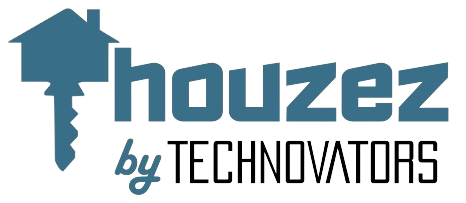koreycyril3324
About koreycyril3324
Understanding Precious Metals IRA: A Complete Examine
Introduction
In recent years, the curiosity in treasured metals as a form of investment has surged, notably in the context of Particular person Retirement Accounts (IRAs). A Precious Metals IRA allows individuals to invest in physical precious metals as a part of their retirement portfolio. This examine report aims to offer a detailed understanding of Valuable Metals IRAs, including their advantages, risks, laws, and the strategy of setting one up.
What’s a Precious Metals IRA?
A Precious Metals IRA is a specialized type of self-directed IRA that enables investors to hold bodily treasured metals—such as gold, silver, platinum, and palladium—in their retirement accounts. In contrast to traditional IRAs, which typically embody stocks, bonds, and mutual funds, a Precious Metals IRA diversifies an investor’s portfolio by incorporating tangible belongings which have traditionally maintained their value.
Sorts of Valuable Metals Allowed
The inner Revenue Service (IRS) permits specific varieties of treasured metals to be included in a Precious Metals IRA. These embrace:
- Gold: Have to be 99.5% pure or higher (e.g., American Gold Eagle, Canadian Gold Maple Leaf).
- Silver: Must be 99.9% pure or greater (e.g., American Silver Eagle, Canadian Silver Maple Leaf).
- Platinum: Must be 99.95% pure or greater (e.g., American Platinum Eagle).
- Palladium: Must be 99.95% pure or larger (e.g., Canadian Palladium Maple Leaf).
Advantages of a Precious Metals IRA
- Inflation Hedge: Valuable metals are often seen as a safeguard against inflation. During instances of financial uncertainty, the worth of treasured metals tends to rise, defending traders’ purchasing power.
- Diversification: Together with treasured metals in an IRA can diversify an investor’s portfolio, decreasing overall risk. Precious metals usually move independently of inventory and bond markets, making them a pretty possibility for danger management.
- Tangible Property: In contrast to stocks or bonds, precious metals are physical belongings that can be held and stored. This tangibility can provide peace of thoughts for investors concerned about market volatility.
- Tax Advantages: Treasured Metals IRAs provide the same tax benefits as traditional IRAs. Contributions could also be tax-deductible, and taxes on good points are deferred till withdrawal, permitting for potential development without speedy tax implications.
Risks of a Precious Metals IRA
- Market Volatility: Whereas treasured metals can function a hedge in opposition to inflation, they will also be subject to significant worth fluctuations. Investors have to be prepared for potential downturns out there.
- Storage and Insurance coverage Costs: Physical valuable metals must be stored in a secure facility, which incurs further costs. Investors ought to factor in these storage charges and consider insurance for his or her holdings.
- Limited Liquidity: Not like stocks or bonds, selling bodily valuable metals can take time and should contain extra costs. Traders may find it difficult to liquidate their belongings quickly in times of want.
- Regulatory Compliance: Precious Metals IRAs should adhere to particular IRS regulations. Failure to conform can lead to penalties and tax liabilities.
Establishing a Precious Metals IRA
Organising a Precious Metals IRA includes a number of steps:
- Choose a Custodian: Step one is to pick out a custodian who specializes in Treasured Metals IRAs. The custodian will handle the account and guarantee compliance with IRS regulations.
- Fund the Account: Buyers can fund their Precious Metals IRA through numerous strategies, together with transferring funds from an existing IRA or making a direct contribution. It is essential to know the contribution limits and tax implications.
- Select Valuable Metals: As soon as the account is funded, investors can select which precious metals to buy. It’s essential to pick IRS-accepted metals and ensure they meet the required purity requirements.
- Storage: The chosen precious metals should be saved in an IRS-authorized depository. The custodian will usually arrange for the storage and insurance of the metals.
- Monitor the Investment: Buyers should usually evaluate their Precious Metals IRA to assess performance and make adjustments as needed. Staying informed about market trends and financial indicators is important for effective management.
Regulations Governing Precious Metals IRAs
The IRS has established particular laws governing Valuable Metals IRAs to ensure compliance and protect buyers. Key rules include:
- Eligible Treasured Metals: Solely certain sorts of precious metals are allowed, as mentioned earlier. Buyers must make sure that their purchases meet the required purity requirements.
- Storage Necessities: Treasured metals have to be stored in an IRS-approved depository. Investors can not personally hold their precious metals of their possession.
- Contribution Limits: Treasured Metals IRAs are topic to the identical contribution limits as conventional IRAs. For 2023, the contribution limit is $6,500 for people beneath 50 and $7,500 for those 50 and older.
- Required Minimum Distributions (RMDs): Like traditional IRAs, investors should begin taking RMDs from their Precious Metals IRA at age 72. Failure to take the required distributions can lead to vital penalties.
Conclusion
A Precious Metals IRA might be an efficient way to diversify an investment portfolio and protect in opposition to financial uncertainty. If you loved this write-up and you would certainly like to obtain additional details regarding gold-Ira.info kindly go to the page. Whereas there are benefits, equivalent to inflation hedging and tax benefits, buyers should additionally bear in mind of the risks and regulatory necessities concerned. By understanding the intricacies of Treasured Metals IRAs, buyers can make informed decisions about incorporating precious metals into their retirement technique. As with all investment, thorough analysis and session with financial advisors are really useful to make sure that a Precious Metals IRA aligns with particular person monetary targets and threat tolerance.
No listing found.
